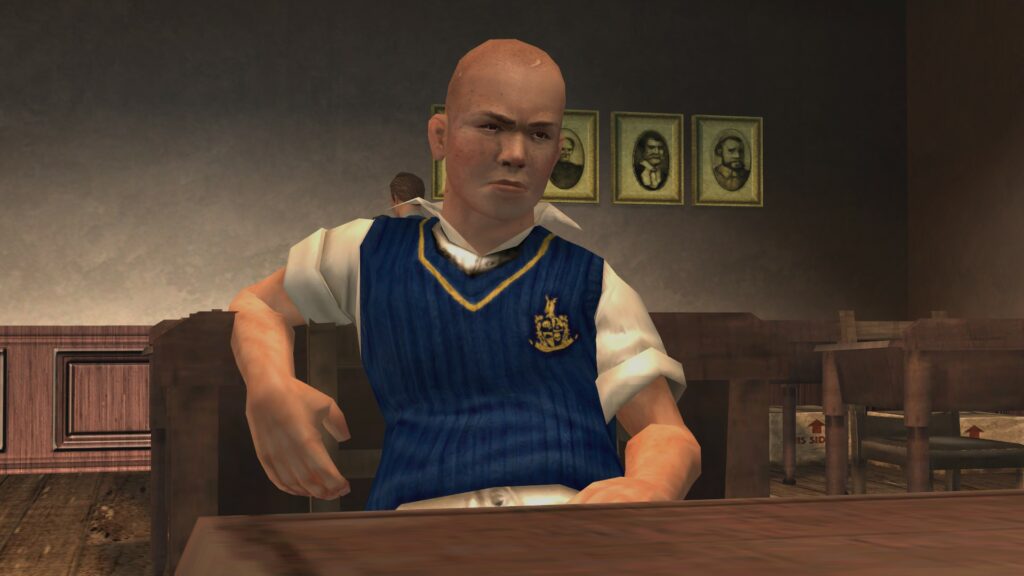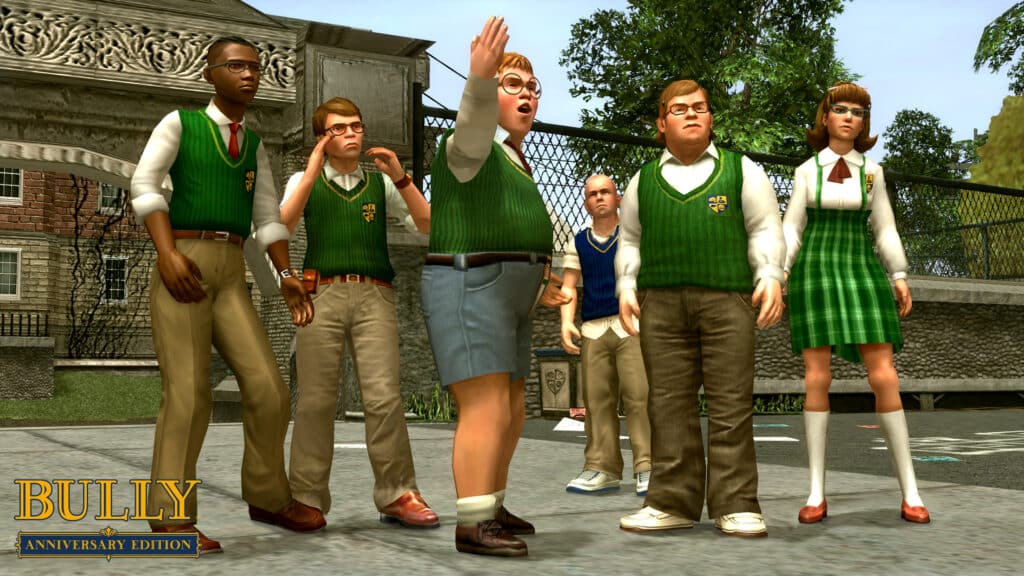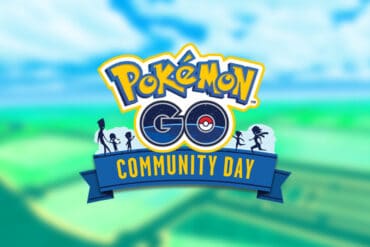Bully (Canis Canem Edit), the 2006 Rockstar game, wasn’t particularly remarkable upon its initial release. Despite receiving positive reviews, it was also surrounded by controversy. The game was launched during the final stages of the PS2 era and utilized the same engine as Grand Theft Auto: San Andreas. With a younger cast of characters set in a distinct world, Bully featured the typical humor, gameplay mechanics, and soundtrack of a classic Rockstar game.
In my recollection, Bully stands out for being a pioneering title that took a significant risk before gaining mainstream attention. It was the first video game I played where I got to experience a queer character’s perspective.
Jimmy Hopkins, the central character, was not the expected representation I had in mind for myself. He was a young, brash, cis white bisexual male, while I, at that time, was a young, cis white lesbian female. Despite his occasional savagery and anger, I found myself laughing at his witty one-liners and sarcastic retorts. However, it wasn’t until I discovered the option to kiss a male, non-playable character that I could genuinely relate to his rage. It was the same fury I struggled to suppress every day as a closeted lesbian.
I was powerless to retaliate against the bullies who taunted the only openly queer person at my high school or the ones who hurled homophobic slurs at a straight boy with a feminine voice. I couldn’t hurl stink bombs at them when they stole a girl’s clothes from her locker and threw them in the shower as a warning to any lesbians in the vicinity. I was consumed by rage, but Jimmy was capable of acting on it. For the first time, I could embody a character who was unafraid to kiss someone of the same gender.
Kissing Females vs Kissing Males in Bully
When compared to the mechanics involved in kissing a female-presenting character, kissing boys was remarkably innocent. After attending a certain number of Art classes, Jimmy’s health benefits would improve, and the kissing animation would evolve from a brief peck into a complete makeout session with any girl you selected.
However, Jimmy always faces obstacles when trying to kiss a male-presenting character. Even if he had achieved maximum benefits from Art class, Jimmy would still have to present a gift to his male partners. Moreover, his kissing animation would never reach the same level as with his female partners. While such a discrepancy would not be acceptable today, back then, it was seen as revolutionary.
In 2018, Sam Greer conducted a study that revealed that at that time, there were only 179 games that featured queer representation. Out of those, a mere 83 games allowed players to embody queer characters. However, among those 83 games, only 8 characters were pre-written as queer rather than being a customizable option. Remarkably, Jimmy Hopkins was among the characters who blazed the trail for this representation. It’s crucial to acknowledge that, to some extent, Jimmy’s portrayal in Bully helped pave the way for future queer characters in video games.

He may be one of those 83 rather than the 8, but he laid significant groundwork while having no story-related gay content.
It’s important to contextualize that Bully was released several years prior to games like Dragon Age, Mass Effect, and Assassin’s Creed, which offered queer playable characters, and games like The Last of Us, which have characters that were written as queer. Unlike many other queer-coded villains, background characters, or NPCs with fleeting lines, Jimmy Hopkins in Bully was a character whom players could identify with and control. He was a reflection of the player, allowing them to engage in same-gender kisses if they chose to do so. In a world where bullying based on physical appearance, clothing, or other identifiers was prevalent, Rockstar never subjected Jimmy, or by extension the player, to bullying for exploring their queerness.
In the twelve years that passed between the release of Bully and Sam Greer’s study, the landscape of LGBTQ+ rights has seen significant changes. Same-sex marriage, which was legalized in only four countries at the time of Bully’s release, has now been legalized in twenty-one countries, and the number has risen to thirty in the two years since the study. However, despite progress, homosexuality is still illegal in many parts of the world, with some countries even imposing the death penalty for it.
Even in countries like Canada, where same-sex marriage has been legalized since 2005, there are ongoing battles for the rights of queer students to live openly and safely. In places like Alberta, a student like Jimmy would still have to fear being outed against their will and live in constant vigilance. Being openly queer is still a transgressive act in many places, and to have that representation in a game like Bully back in 2006 was truly life-altering.
Jimmy Hopkins is Queer
Jimmy Hopkins is queer. The player may never know it, they may never act upon it, or they may despise it, but that fact will always remain true. Jimmy Hopkins is a queer character. I remember Bully. And I will be forever grateful for it.










